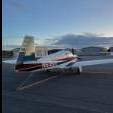Leadville (KLXV) in an NA Mooney?
-
Members Online
- DecalDiva
- rturbett
- Vance Harral
- AviH
- Fly Boomer
- Mobius708
- TNdebdriver
- hoot777
- bamace
- TCC
- 1980Mooney
- A64Pilot
- 76Srat
- Mamkeci
- mooniacX
- PT20J
- Jim F
- EricJ
- NickG
- Niko182
- Graf_Aviator
- clh
- Ragsf15e
- Ivan
- Lax291
- Hamburglar
- Jay Bird
- ArtVandelay
- jamesyql
- FastGlasair
- LooneyMooney
- Hank
- EKoS
- Schllc
- GeneralT001
- MatthiasArnold
- PeteMc
- Alain Camous


Recommended Posts
Join the conversation
You can post now and register later. If you have an account, sign in now to post with your account.